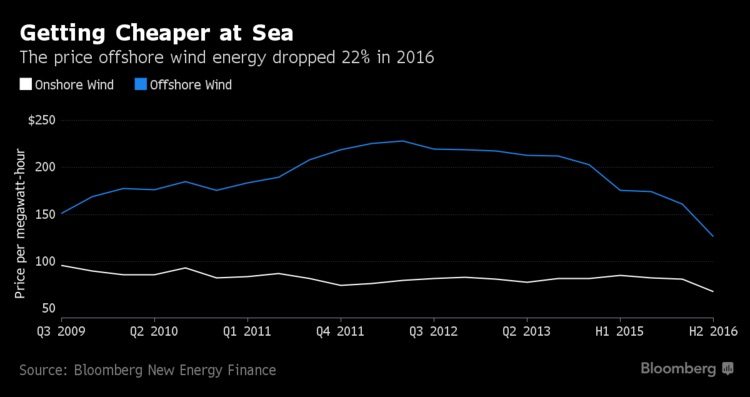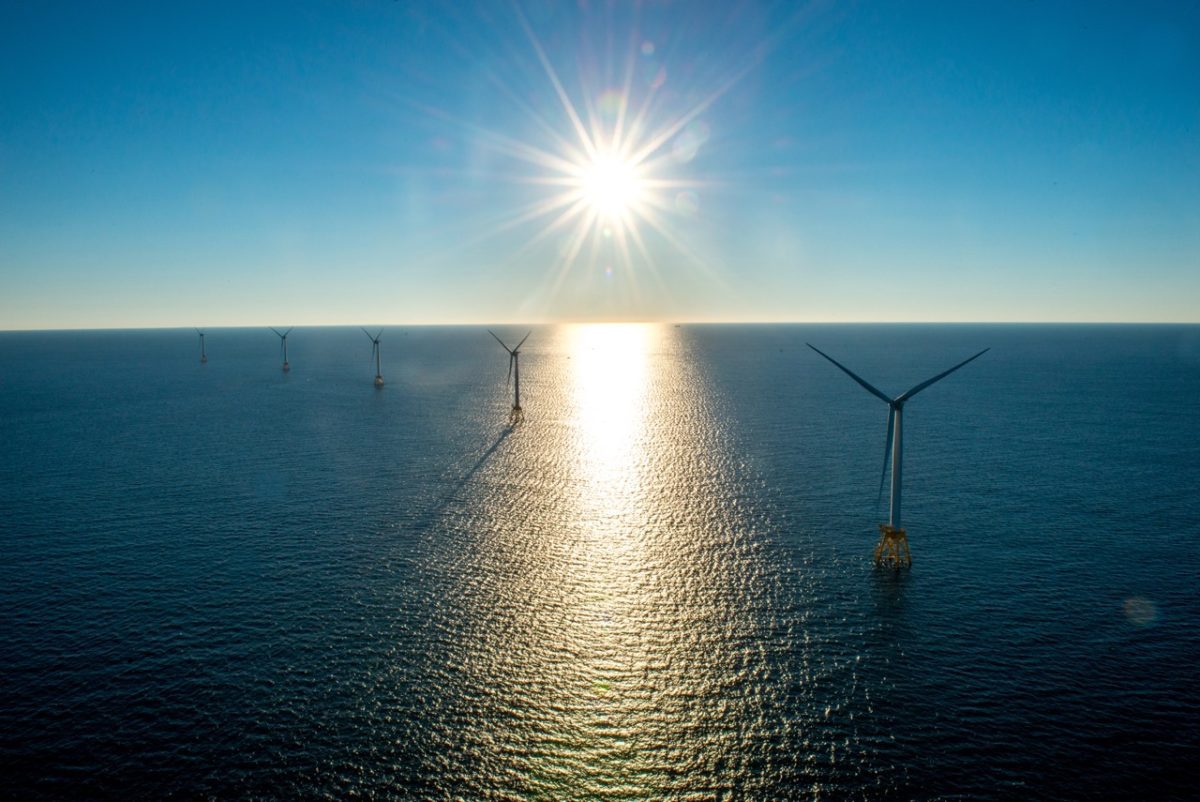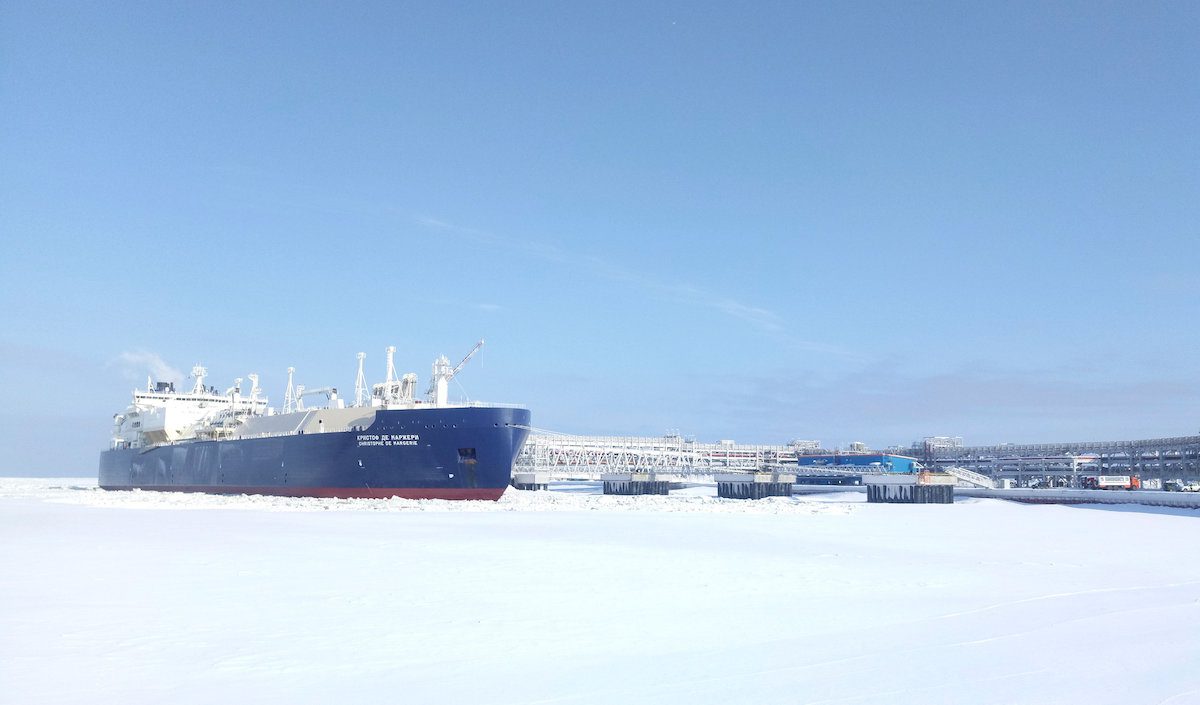Deepwater Wind LLC project off the coast of Rhode Island, the first offshore wind farm in the U.S.. Credit: Deepwater Wind
By Joe Ryan and Jennifer A. Dlouhy
(Bloomberg) — Offshore wind companies have spent years struggling to convince skeptics that the future of U.S. energy should include giant windmills at sea. Their job just got a lot harder with the election of Donald J. Trump.
The Republican president — who champions fossil fuels and called climate change a hoax — has mocked wind farms as ugly, overpriced and deadly to birds. His most virulent criticism targeted an 11-turbine offshore project planned near his Scottish golf resort that he derided as “ monstrous.”
Companies trying to build in the U.S., including Dong Energy A/S and Statoil ASA, are hoping to change Trump’s mind. They plan to argue that installing Washington Monument-sized turbines along the Atlantic coast will help the president make good on campaign promises by creating thousands of jobs, boosting domestic manufacturing and restoring U.S. energy independence.
“We are a billion-dollar heavy industry that is set to build, employ and invest,” Nancy Sopko, director of offshore wind and federal legislative affairs for the industry-funded American Wind Energy Association, said in an interview. “We have a great story to tell to this administration.”
Significant Stakes

The push to win over the Trump administration comes as offshore wind is on the brink of success in North America after a decade of false starts. Costs are falling dramatically. Deepwater Wind LLC completed the first project in U.S. waters in August. And in September, the Obama administration outlined plans to ease regulatory constraints and take other steps to encourage private development of enough turbines to crank out 86,000 megawatts by 2050. That’s about the equivalent of 86 nuclear reactors.
“We are an industry on the rise,” Thomas Brostrom, Dong’s general manager of North America, said in an interview. “We want very much to come in and explain to the new administration what we can do for job creation and energy independence.”
A White House spokeswoman did not respond to requests for comment.
The stakes are big. Dong, Statoil, Deepwater and other companies secured a total of 11 leases to build offshore wind farms. To move forward, developers will need permits from multiple agencies and, in some instances, federal grants to refurbish ports. For instance, Deepwater’s 30-megawatt wind farm off Rhode Island benefited from a $22.3 million U.S. Transportation Department grant to upgrade piers and terminals for use as a staging area.
Talking Points
To be clear, installing turbines at sea requires years of planning, and Trump may be out of office by the time some developers need federal approvals. State governments, meanwhile, remain the biggest drivers of renewable energy development, because they can mandate that utilities get a certain amount of power from offshore wind or other sources.
Nevertheless, offshore developers need a basic level of cooperation in Washington to keep the nascent industry moving forward. “They don’t want to lose the progress that they’ve made,” said Frank Maisano, a Washington-based energy specialist for the lobbying firm Bracewell LLP.
Shoring up Trump administration support will require developers to shed climate change talking points and dispel any notions that offshore wind is an environmental relic of the Obama administration, said Timothy Fox, an analyst at Washington-based ClearView Energy Partners LLC. It may help that two of the biggest developers — Dong and Statoil — have deep roots in offshore oil and natural gas.
Jobs will be at the crux their message. Erecting 600-foot (183-meter) turbines along the Eastern seaboard may boost employment in struggling port towns from South Carolina to Maine, generating an estimated 31,000 jobs in the Mid-Atlantic alone, according to the National Renewable Energy Laboratory. And if the industry booms, turbine manufacturers including Vestas Wind Systems A/S and Siemens AG have said they may open U.S. factories.
Key Figures
“Logically there should be a good match here with the Trump administration,” Kit Kennedy, the Natural Resources Defense Council’s director of energy and transportation, said in an interview. “We will see if ideology gets in the way.”
Persuading the president himself could be challenging. The bare-bones energy plan posted on the White House website calls for increasing coal, oil and gas production — but makes no mention of wind or other forms of clean energy. Trump in 2012 tweeted: “Not only are wind farms disgusting looking, but even worse they are bad for people’s health.”
Ultimately it’s unclear whether Trump’s 140-character appraisals of wind energy will translate into U.S. policy, or if they were simply reactions to windmills potentially spoiling views from his golf course in Aberdeenshire, Scotland. Either way, the commander-in-chief’s personal support may not be crucial for developers in the U.S.
The key figures for offshore wind companies to persuade are deputy secretaries, directors and others within the Interior and Energy departments. A central player is the yet-to-be-named director of the Bureau of Ocean Energy Management, an Interior Department agency responsible for granting leases to offshore oil, gas and wind developers.
Potential Allies
The industry may already have a few key allies. Rick Perry, Trump’s proposed energy secretary, oversaw a record expansion of wind energy during his time as Texas governor. And at least one high-ranking official who has supported offshore wind at the Bureau of Ocean Energy Management — Acting Director Walter Cruickshank — remains in place.
Trump’s rise to power does not appear to have curbed offshore wind developers’ enthusiasm about the U.S. market. Weeks after the election, Norway’s Statoil paid a record $42.5 million for a lease to develop a site off the coast of New York. And at least nine companies — including a unit of oil giant Royal Dutch Shell Plc. — have qualified to bid next month for a lease to build off North Carolina.
“There is a misconception that wind energy is all driven by climate change,” said Danish ambassador Lars Gert Lose, who is helping Fredericia, Denmark,-based Dong with lobbying efforts. “But this is a very competitive industry.”
© 2017 Bloomberg L.P

 Join The Club
Join The Club












